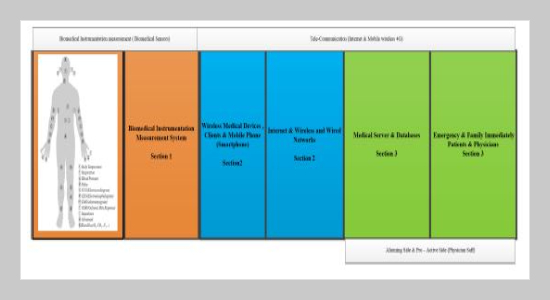Jafaar Fahad A. Rida This email address is being protected from spambots. You need JavaScript enabled to view it.1 and Ahmed Alkhayyat2
1Department of Information System Computer, College of Computer Science and Information Technology, University of Sumer,
Dhiqar, Iraq
2Department of Computer, the Islamic University Technical Engineering College, 54001 Najaf, Iraq
Received:
January 13, 2021
Copyright The Author(s). This is an open access article distributed under the terms of the Creative Commons Attribution License (CC BY 4.0), which permits unrestricted use, distribution, and reproduction in any medium, provided the original author and source are cited.
Accepted:
February 15, 2021
Publication Date:
June 14, 2021
Download Citation:
||https://doi.org/10.6180/jase.202110_24(5).0016
Biomedical application has been an important component in the use of contemporary data and communication methods for health care. Over time, wireless networking technology has increasingly penetrated and made its way into all components of our everyday life. An area for encouraging the future of wireless networking is medical implementation. Through transmitting their status to nurses in real time, a patient who is remotely placed may be remotely handled. Physiological parameters such as body temperature, degree of oxygen saturation, heart rate, amount of blood sugar, blood pressure, etc. were primarily generated to observe e-healthcare devices. However with the advancement of wireless technology, there have been a range of variations in e-healthcare systems and improvements. Tele-biomedical wireless network apps such as telemedicine for mobile communications are a distant medical activity that allows different individuals to collaborate and facilitate their collective activities through IT and telecommunications to diagnose or treat disease. Remote computers are medication servers and databases that help interpret and handle critical evidence and provide patients with adequate service in real-time. Medicinal goods are a general idea to inform and link customers to preventive medical care using and linking to mobile telephones and other networks. The framework incorporates applications for the transmission of patient data from an Android application, based on market sensitivity for social media schemes such as a child vaccine tracking software app which could be adaptable with biometric instruments such as thermometers, glucometers, and densitoms to other diseases, such as higher BP, diabetes, and fever.ABSTRACT
REFERENCES
Keywords:
E-Healthcare System, Digital Electronic Medical Equipment, Tele—Medical Services, Mobile Wireless Networks, Tele—Biomedical Applications
















